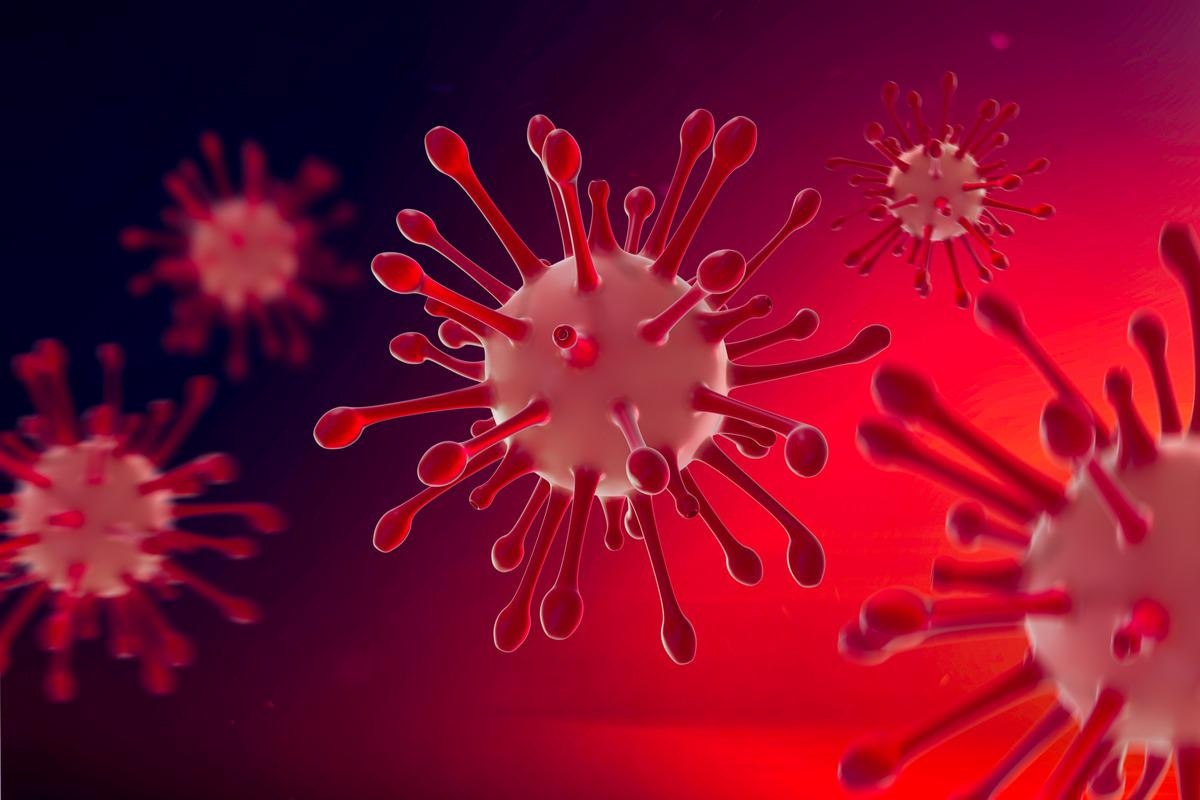The severe acute respiratory syndrome coronavirus 2 (SARS-CoV-2) spike protein binds the host cell surface receptor angiotensin-converting enzyme 2 (ACE2). It is a glycosylated protein and is a target for vaccines and therapeutics against the virus. Unraveling the structure of the membrane-bound spike protein will further our understanding of the virulence and pathogenicity of the virus.
A new study from the University of Illinois constructs the complete structure of membrane-bound spike protein using a computational approach.
Study: Post-Translational Modifications Optimize the Ability of SARS-CoV-2 Spike for Effective Interaction with Host Cell Receptors. Image Credit: MIA Studio/Shutterstock
A preprint version of the study, which is yet to undergo peer review, is available on the bioRxiv* server.
SARS-CoV-2 biology
The binding of SARS-CoV-2 spike protein to host cell receptors is the first essential step for viral entry and infection. This is true for all coronaviruses. The spike proteins on the viral envelope have all components essential for infection of host cells. After binding to the host cell, the viral membrane fuses with the host cell membrane, and then the viral genome enters the host cell. Therefore, it is imperative to understand the mechanism of action of the spike protein. It will further our knowledge of the steps involved in viral infection. Ultimately, it will help in developing novel therapeutics against the virus.
Gaps in knowledge
Several studies have characterized the structural features of the spike protein. Cryo-EM studies provide information on the structural details of the spike globular domain or the spike head. However, there are gaps in our knowledge of the functionally important regions in the full spike, including the highly conserved fusion peptide segment that initiates the fusion of the viral and host membranes, the stalk heptad repeat 2 (HR2) domain that refolds during the membrane fusion and the transmembrane (TM) domain with multiple palmitoylation sites that stabilize the spike in the viral envelope. Furthermore, there is no information about the glycosylation of different residues. Glycosylation mediates protein folding. It decides the types of cells and tissues that the virus is capable of infecting. It also shields the virus from immune recognition.
Current studies also do not consider the structural and environmental details to study the behavior of native spike proteins in a physiological context.
Computational simulations offer techniques for modeling complex systems like the spike protein in detail. Studies applying classical molecular dynamics (MD) simulations to the identified structures of the spike head and full-length spike models have provided powerful insights into various functionally relevant features. Even so, there is little understanding about the global dynamics of the spike protein especially in effectively locating its receptor in crowded cellular environments.
Until now, spike glycosylation has been studied in the context of shielding. The possible roles of glycosylation in the protein’s conformational dynamics are unexplored.
The transmembrane domain of spike protein is palmitoylated and possibly mediating cell fusion in other viruses. However, this role also remains unexplored.
Computational simulations
In this study, the authors have constructed a full-length, membrane-embedded spike protein to investigate its conformational dynamics at the atomic scale using molecular dynamics simulations. In the first step, they used a hybrid approach – combining homology modeling, protein-protein docking, and molecular dynamics simulations of the modeled regions with the available experimental data. With this, they constructed a full-length, palmitoylated, and fully-glycosylated spike. The protein was embedded in a membrane bilayer with a lipid composition from the endoplasmic reticulum-Golgi intermediate compartment (ERGIC).
After validating the modeled parts, they performed multi-microsecond molecular dynamics simulations of the full-length spike protein, embedded in a lipid bilayer of composition derived from ERGIC. These simulations were used to characterize global dynamics and inter-domain motions, focusing specifically on the potential role of glycans in these processes. They also performed controlled, multi-microsecond simulations of the non-glycosylated spike protein to understand the importance of the glycans in modulating the global motion of the spike protein. They also studied the specific role played by palmitoylations in modulating the membrane curvature, thus possibly regulating the membrane fusion with the host cell.
Impact of glycosylation and palmitoylation
In this study, the authors have performed multi-microsecond molecular dynamics simulations – the longest known trajectory – of the full spike protein. These simulations shed light on the conformational dynamics employed by the protein to explore the crowded surface of the host cell. There are three flexible hinges in the stalk that allow global conformational heterogeneity in the fully-glycosylated system mediated by glycan-glycan and glycan-lipid interactions.
The dynamical range of the spike protein is considerably reduced in its non-glycosylated form. Palmitoylation of the membrane domain amplifies the local curvature which may prime membrane fusion. The identified hinge regions are highly conserved in SARS coronaviruses. Thus, they are functionally important in enhancing viral infection. These highly conserved hinges may offer novel points for targeting alternative therapeutics
Conclusion
This study provides a deeper understanding of the intricate roles and functions of the different elements of the spike protein. It shows how the spike protein samples a crowded surface of its host cell via the glycans. It reveals the impact of posttranslational modifications in the pathogenicity of the virus.
*Important notice
bioRxiv publishes preliminary scientific reports that are not peer-reviewed and, therefore, should not be regarded as conclusive, guide clinical practice/health-related behavior, or treated as established information.
